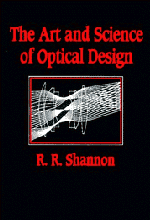4 - IMAGE ANALYSIS
Published online by Cambridge University Press: 05 June 2012
Summary
Image Quality Measures
The ultimate measure of acceptable image quality from a lens is customer or user satisfaction with the image that is produced. This measure can be the result of a quantitative evaluation, such as signal-to-noise ratio under certain conditions. In many cases, it may be a subjective evaluation as to the acceptable quality of the image as determined by the viewer. In any case, the goal for the lens designer needs to be expressed in some quantitative values that can be computed by the designer from the lens data. Only in this way can the designer know that the design task is completed.
The goal of lens design is to produce a system which will provide images of acceptable quality for a specified user. Image quality is frequently very subjective, based upon the opinion of a user as to whether the appearance of the image is pleasing or informative. In some applications the image quality can be determined in very objective ways, such as the level of contrast of certain fine details exceeding some specified threshold value. In either cases, there are physical quantities describing the image structure that can be used to evaluate the probable degree of acceptability of an image produced by a lens design.
“Image quality” is a somewhat elusive quantity. The quality of an image may be defined by its technical content or pictorial content. Quantifying the technical content or image structure is easier than attempting to quantify the pictorial content of an image.
- Type
- Chapter
- Information
- The Art and Science of Optical Design , pp. 265 - 333Publisher: Cambridge University PressPrint publication year: 1997
- 1
- Cited by



